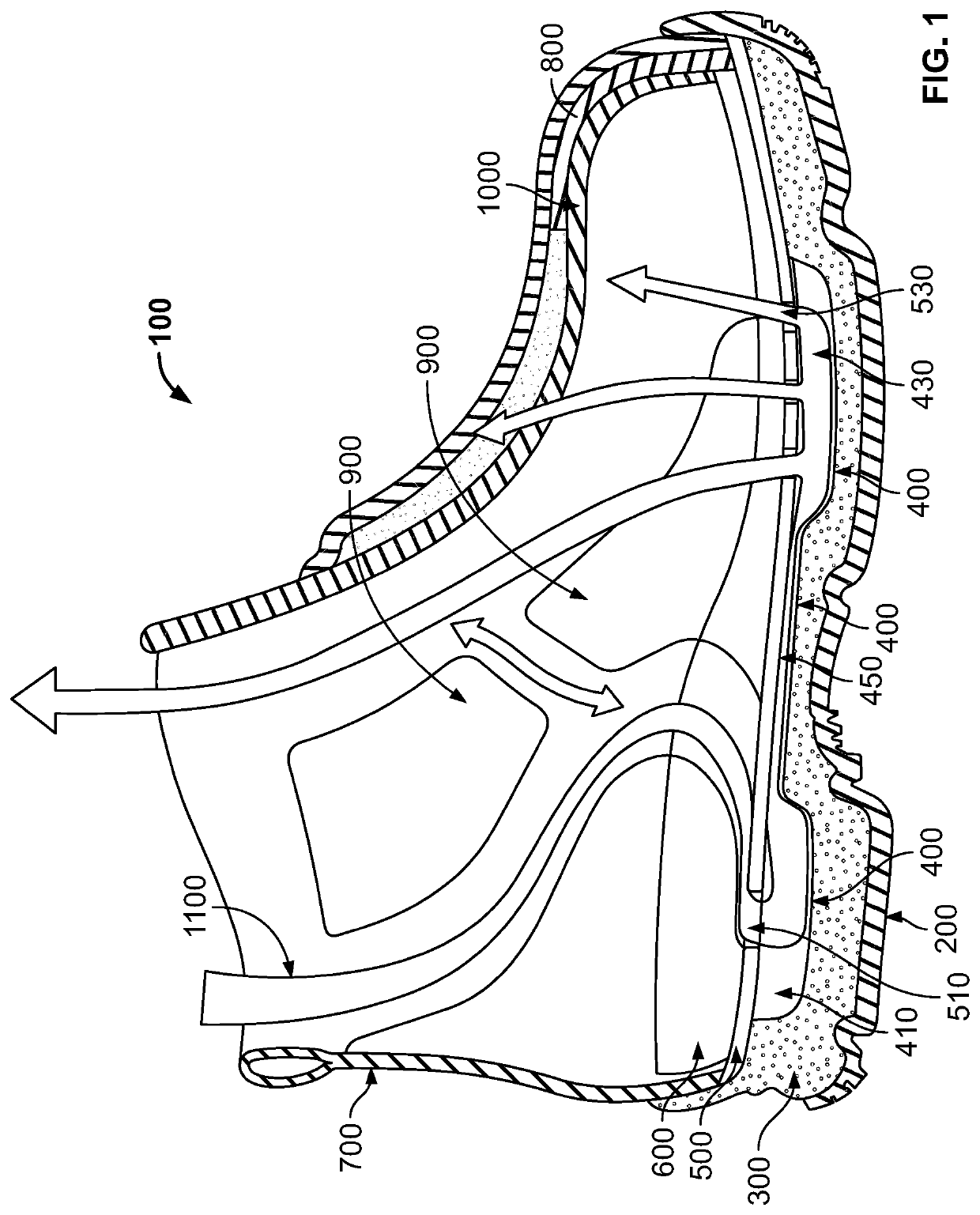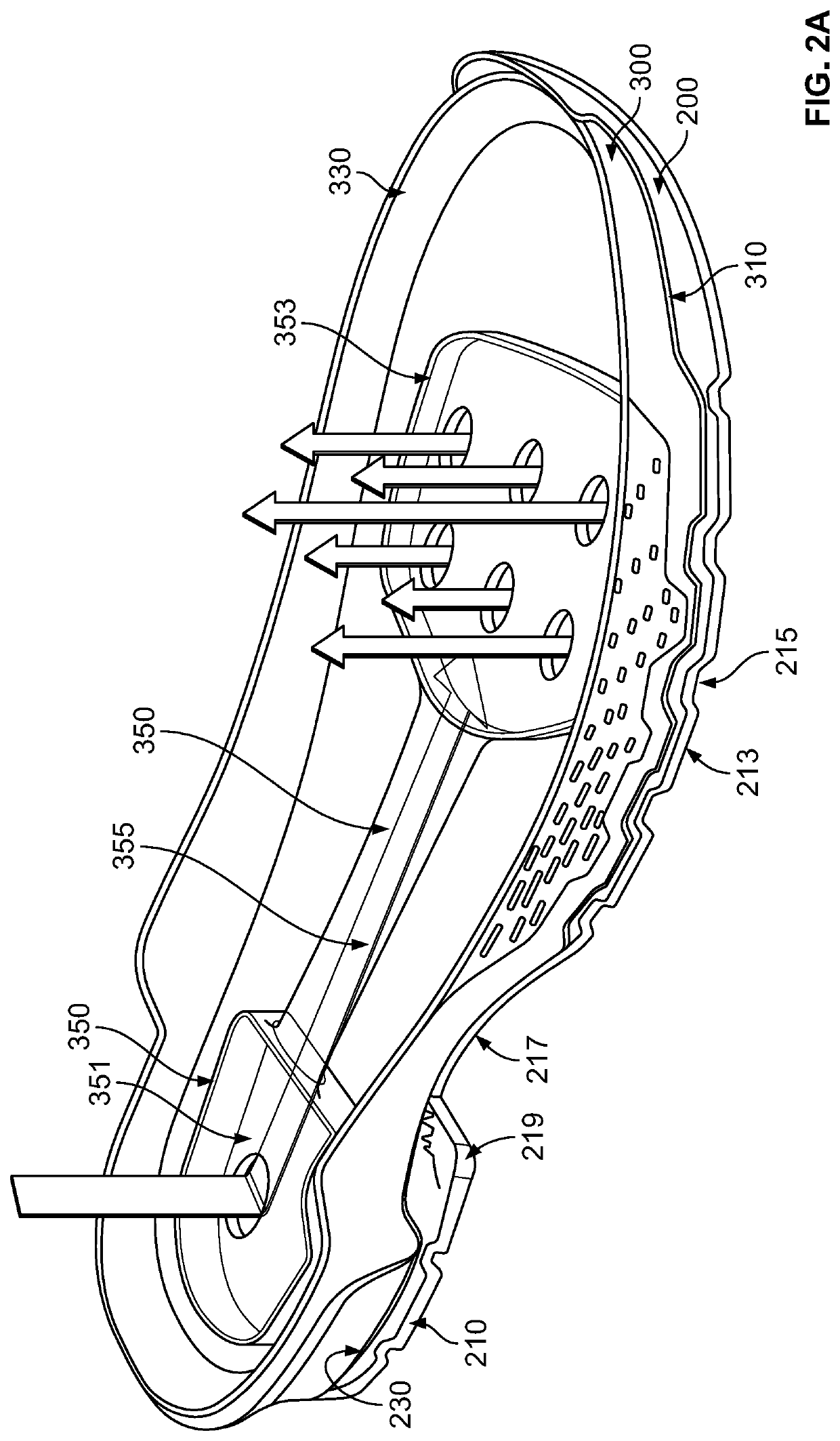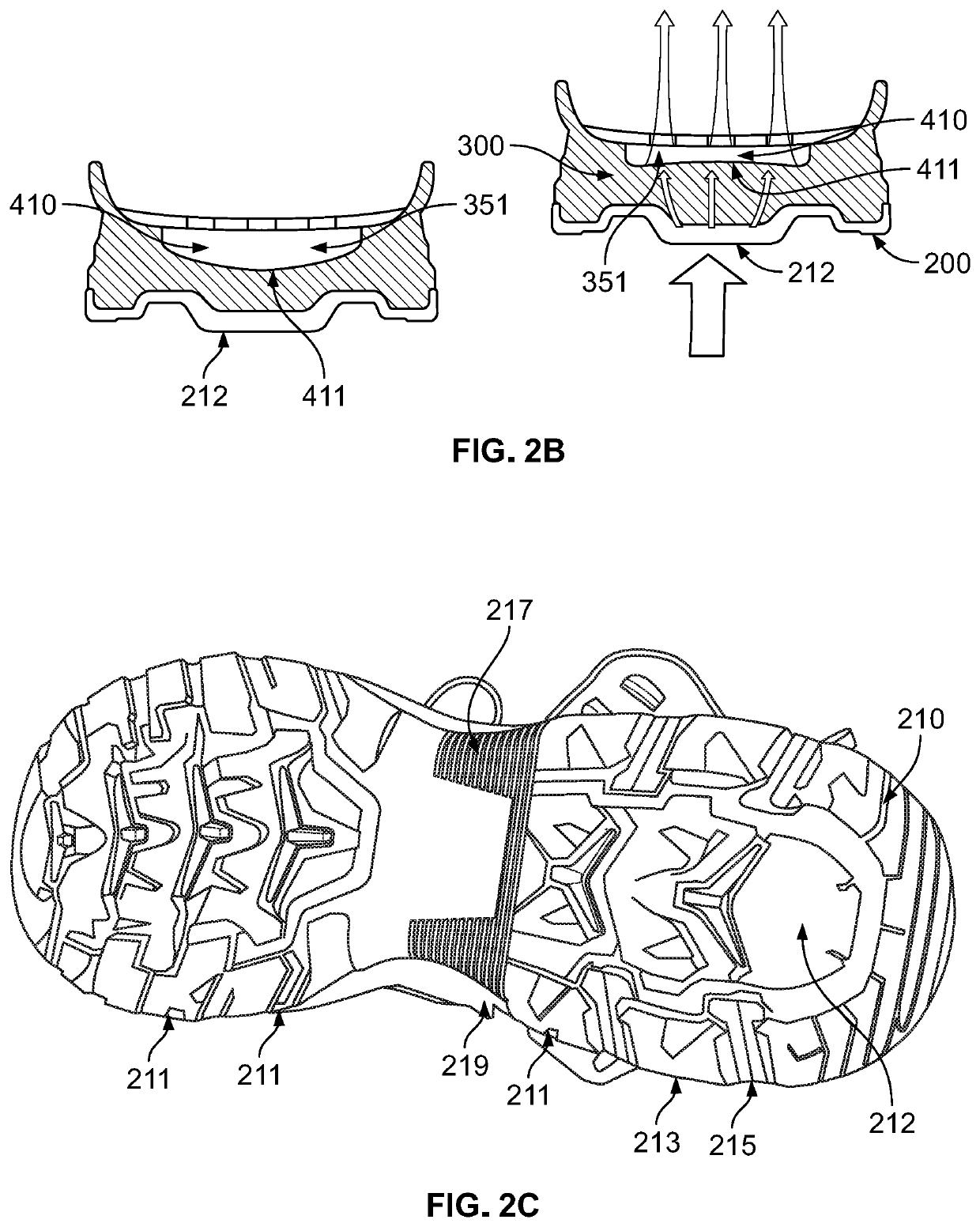Waterproof Boot With Internal Convection System
a technology of convection system and waterproof boot, which is applied in the direction of uppers, soles, insoles, etc., can solve the problems of lack of ventilation, hot, sweaty footwear, and significant blockage of airflow over a significant portion of the wearer's foot and leg,
- Summary
- Abstract
- Description
- Claims
- Application Information
AI Technical Summary
Benefits of technology
Problems solved by technology
Method used
Image
Examples
example 1
[0077]In order to measure the cooling effect of the present technology during use by a wearer, a conventional waterproof boot (“WP membrane boot”) was compared to a ventilated boot (“HVAC boot”). The conventional boot was constructed of a standard waterproof membrane upper and did not include a ventilation mechanism or airflow channels. The ventilated boot included aspects of a preferred embodiment of the present technology including a ventilation mechanism and airflow channels. To test the boots, a wearer placed a conventional boot on his left foot and a ventilated boot on his right foot and walked on a treadmill at a pace of 3.5 mph for a period of 30 minutes. The temperature of the wearer's right and left feet were measured every 10 minutes by infrared camera. The results are shown in FIG. 11.
example 2
[0078]The conventional boot was compared to the ventilated boot using the same method as in Example 1, except that, rather than walking on a treadmill, the wearer conducted normal daily activities over the course of 6 hours with temperature measurements taken from inside each boot every hour. The results are show in FIG. 12.
PUM
| Property | Measurement | Unit |
|---|---|---|
| volume | aaaaa | aaaaa |
| volume | aaaaa | aaaaa |
| depth | aaaaa | aaaaa |
Abstract
Description
Claims
Application Information
 Login to View More
Login to View More - R&D
- Intellectual Property
- Life Sciences
- Materials
- Tech Scout
- Unparalleled Data Quality
- Higher Quality Content
- 60% Fewer Hallucinations
Browse by: Latest US Patents, China's latest patents, Technical Efficacy Thesaurus, Application Domain, Technology Topic, Popular Technical Reports.
© 2025 PatSnap. All rights reserved.Legal|Privacy policy|Modern Slavery Act Transparency Statement|Sitemap|About US| Contact US: help@patsnap.com



